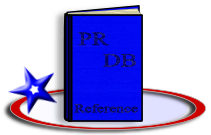
BASIC
ABORT
ASSIGNMENT
BOOLEAN
BRANCHING
BSD
COMPILE.TIME
CONSTANT
DIMENSION
DYNAMIC
EQUATE
EXECUTE
IO
MATH
NLS
SQL
STRING
SYSTEM
TABLE
TAPE
TBD
TRANSACTION
TRANSFORM
PROC
BRANCHING
BUFFER
EXECUTE
TCL
ANALYSIS
IO
SYSTEM
| C | Index: C D E F G I L M O P R S U W Symbol Code | |
| CLEARFILE | Deletes all the records in a table's data section or dict section. | |
| CRT | Manages output to terminals. | |
| D | Index: C D E F G I L M O P R S U W Symbol Code | |
| DELETE | There are two delete commands. Both are explained here. | |
| DELETELIST | Removes a record from the &SAVESLISTS& table. | |
| DELETEU | This command acquires an update lock before deleting the record. | |
| DISPLAY | Manages output to terminals. | |
| E | Index: C D E F G I L M O P R S U W Symbol Code | |
| ECHO | Controls whether or not output to terminal (standard out) is suppressed. | |
| EOF | Determines if you are at the end of the command line parameters. | |
| ERRMSG | Formats errors using the ERRMSG data. | |
| F | Index: C D E F G I L M O P R S U W Symbol Code | |
| FILELOCK | Locks an entire table. | |
| FILEUNLOCK | Releases a FILELOCK. | |
| FLUSH | Used with OPENSEQ to make sure all writes have completed. | |
| G | Index: C D E F G I L M O P R S U W Symbol Code | |
| GET | Gets a command line argument | |
| I | Index: C D E F G I L M O P R S U W Symbol Code | |
| INPUT | Used to receive input from the default input device, which is usually a keyboard, but could be a scanner, or even another computer. | |
| INPUTCLEAR | Clears the type-ahead buffer (any characters already in the pipeline). | |
| INPUTDISP | This is not really a part of the INPUT family. Use CRT instead. | |
| INPUTDP | This is the NLS safe version of the INPUT command. | |
| INPUTERR | This is not really part of the INPUT family. INPUTERR writes a formated error message to the last line of teh termional, as defined by the TERM startment. | |
| INPUTIF | Allows several things to be mashed into a single, poorly thought out command. Use INPUT instead and increase readability. | |
| INPUTNULL | Defines any single character, that when input by itself should be converted into a null. | |
| INPUTTRAP | Selects a GOSUB branch based on the position of the entered character. | |
| L | Index: C D E F G I L M O P R S U W Symbol Code | |
| LOCK | Allow for the locking of non-table related resources. | |
| M | Index: C D E F G I L M O P R S U W Symbol Code | |
| MATREAD | Identical to READ except that the receiving dynamic array is replaced by a receiving dimensioned array. | |
| MATREADU | Identical to READU except that the receiving dynamic array is replaced by a receiving dimensioned array. | |
| MATWRITE | Identical to WRITE except that the receiving dynamic array is replaced by a receiving dimensioned array. | |
| MATWRITEU | Identical to WRITEU except that the receiving dynamic array is replaced by a receiving dimensioned array. | |
| O | Index: C D E F G I L M O P R S U W Symbol Code | |
| ON | Use ON as part of the GOSUB command or as part of the WRITE command. | |
| P | Index: C D E F G I L M O P R S U W Symbol Code | |
| PAGE | Forces output to advance to a new page, first triggering a footer, if any, then paging, then triggering a header if any. | |
| Manages output to terminals or printers. | ||
| PROCREAD | Reads the primary input buffer from the calling PROC. | |
| PROCWRITE | Updates the input buffer of the calling PROC. | |
| PROMPT | Changes the single character used by the INPUT family of commands. | |
| R | Index: C D E F G I L M O P R S U W Symbol Code | |
| READ | Retrieves a record from the file and based on the record id | |
| READBLK | ||
| READLIST | ||
| READNEXT | Gets a value (typically an ID) from a select list, then moves the pointer forward to the next value. | |
| READSEQ | ||
| READT | ||
| READU | Retrieves a record from the file and based on the record id and sets an update lock | |
| READV | Retrieves a field from a record from the file and based on the record id | |
| READVU | Retrieves a field from record from the file and based on the record id and sets an update lock | |
| RECORDLOCKED | ||
| RECORDLOCKL | ||
| RECORDLOCKU | ||
| S | Index: C D E F G I L M O P R S U W Symbol Code | |
| SEEK | Similar to GET(ARG.), SET(ARG.) also auto-advances the pointer to the next element. | |
| U | Index: C D E F G I L M O P R S U W Symbol Code | |
| UNLOCK | Release a resource lock. | |
| W | Index: C D E F G I L M O P R S U W Symbol Code | |
| WEOF | W(rite) E(nd) O(f) F(ile) marker on a tape. | |
| WEOFSEQ | W(rite) E(nd) O(f) F(ile) marker on a sequential file. | |
| WRITE | Writes record back to a database table. | |
| WRITEBLK | ||
| WRITELIST | ||
| WRITESEQ | ||
| WRITESEQF | ||
| WRITET | Writes data to a tape device.Contributed by Russ Watson | |
| WRITEU | Writes data back to the database. | |
| WRITEV | Writes one field back to a database table. | |
| WRITEVU | Writes field back to a database table. | |
| Symbol | Index: C D E F G I L M O P R S U W Symbol Code | |
| @ | Used in managing cursor positioning on terminals. | |
| Code | Index: C D E F G I L M O P R S U W Symbol Code | |
| COMMANDLINE | Example of EOF and GET argument handlers | |
| CURSOR | Cursor managment example. | |
